How are upper and lower eyelid surgeries done in Turkey?Ankara Aeshtetics Clinic
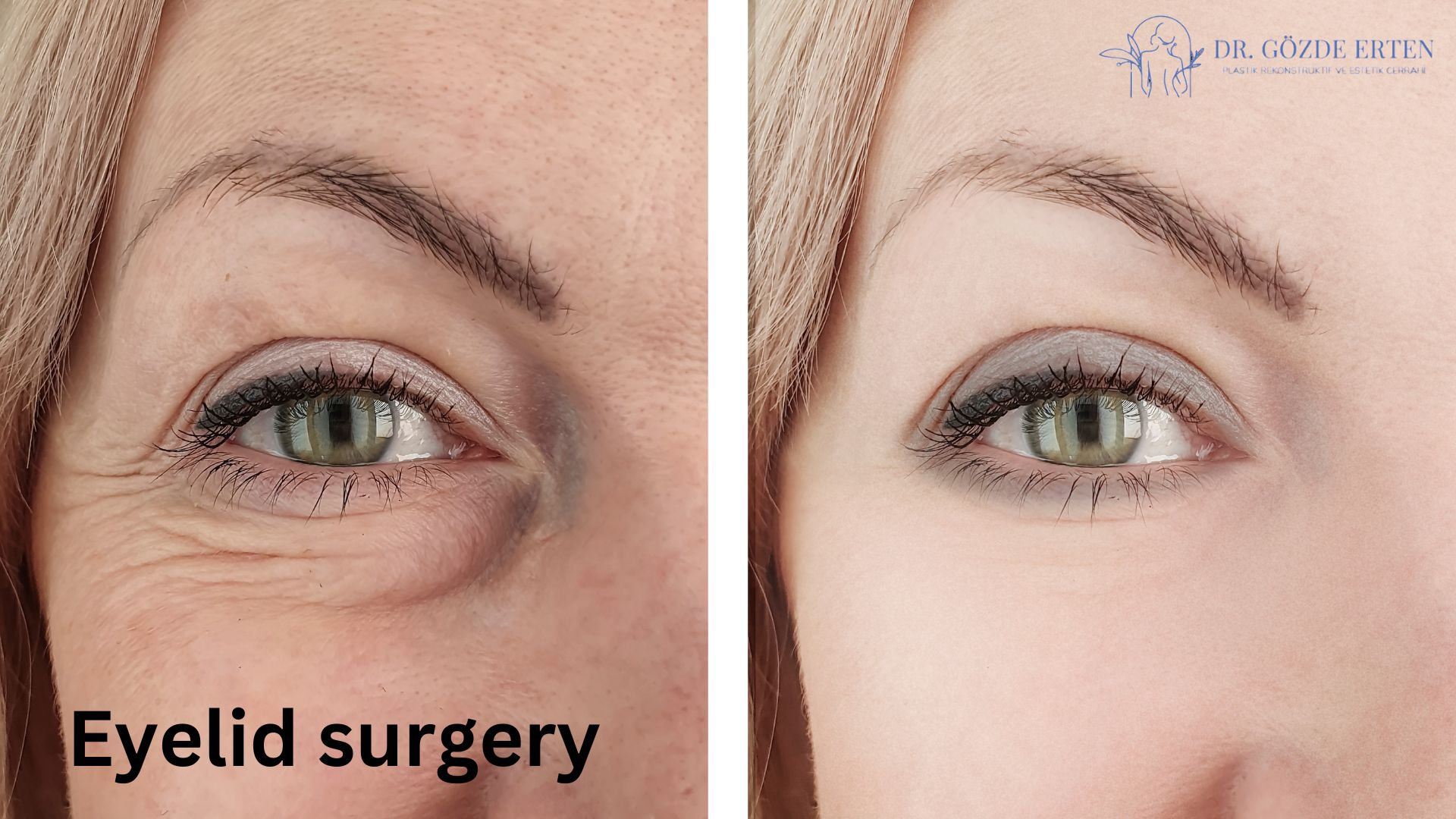
What are upper and lower eyelid surgery procedures?
The aim of upper blepharoplasty eyelid surgery is to remove excess skin without hollowing the eyelid. Removing excess tissue from the eyelids will result in an excessively hollowed eyelid. If there is hollowing of the upper eyelid, muscle tissue from another part of the body is injected to make the area look fuller and younger. Generally, tissue augmentation and augmentation surgeries are preferred instead of tissue removal.
Adipose tissue is predominantly utilised in blepharoplasty eyelid surgery. In this surgery, drooping or asymmetry in the eyelids is corrected. If the eyebrow is low, the surgeon will lift it by entering through the hair.
Access to the lower lid and cheek is achieved through lower eyelid surgery via the lid or an incision made beneath the eyelashes. Fat bags are obtained here. These fat bags are also used to fill the socket under the eye.
Fat losses in the midface are filled with fat taken from the body. Various methods lift the cheek. Thus, both the soft tissue loss is replaced, and the downward slips and falls caused by the effect of gravity are pulled up.
Blepharoplasty eyelid surgery is a surgical procedure that is very difficult to compensate for. For this reason, it is performed by our qualified plastic surgeon, who have high aesthetic awareness, understanding, and concern in our clinic.
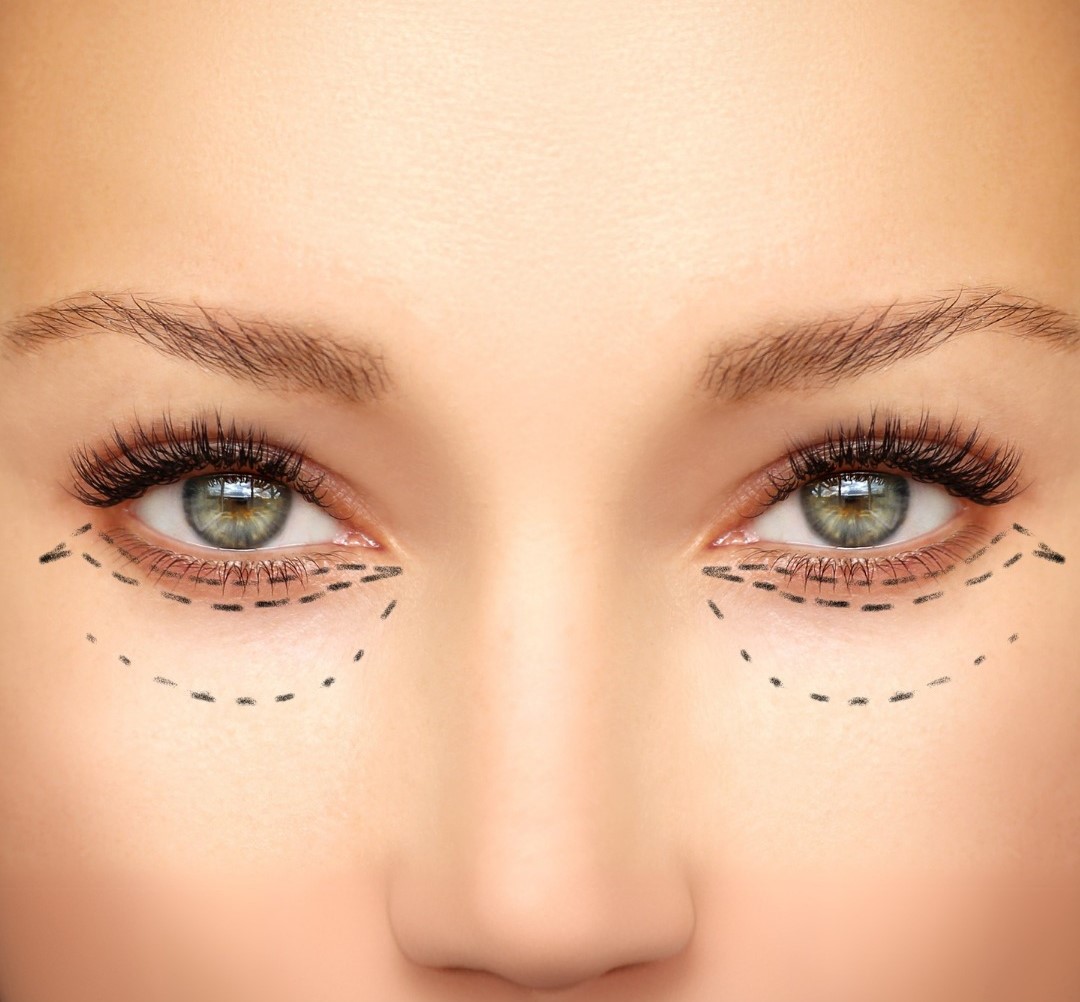
What are the preparations before blepharoplasty eyelid surgery?
- Determine the patient's expectations.
- Detailed information about the surgical technique and its results should be given.
- Information on the general health status of the patient, such as high blood pressure, diabetes, bleeding disorders, and wound healing characteristics, should be obtained by the physician.
- Preliminary information about the visual field, tear problems, and lens use should be obtained.
- It is important to gather information about the patient's surgeries, particularly those involving the eyelids.
- Avoid using aspirin and its derivatives, ibuprofen or other non-steroidal anti-inflammatory drugs, ginkgo biloba, herbal medicines, and vitamin E supplements before the operation.
- Daily medications should be continued if the physician deems it appropriate.
- It would help if you did not eat or drink anything after midnight before the surgery.
- Take a shower before the operation and wash the eyebrows with shampoo.
- Make-up should not be worn.
- Keep false eyelashes, contact lenses, and accessories at home.
- Since cigarettes and other tobacco products delay wound healing, they should be stopped 2-3 weeks before the surgery.
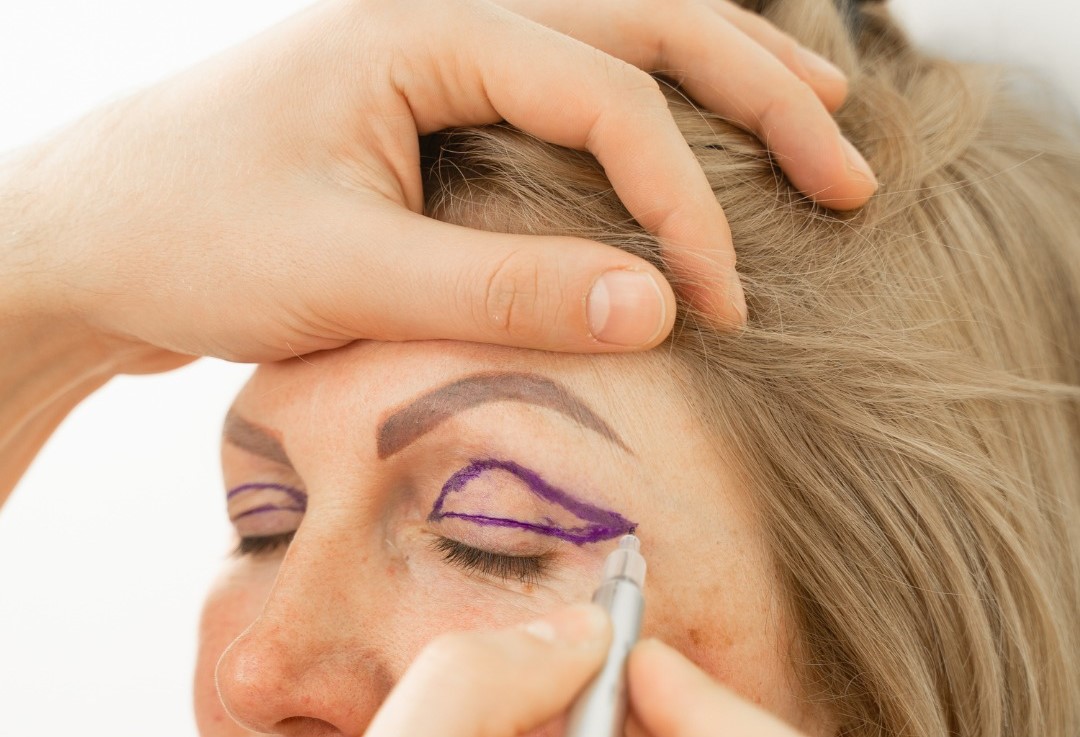
How is Blepharoplasty Eyelid Surgery done?
Blepharoplasty Eyelid Surgery is performed under local anesthesia, local anesthesia with light sedation, or general anesthesia. It is a painless procedure. The operation takes between 1-2 hours, depending on the procedure performed.
Incisions are made along the natural crease line for the upper lid and under the lashes on the lower lid. The incision in the upper lid extends from the upper inner corner of the eyelid to the crease area on the outer part of the eyes. The plastic surgeon will remove the excess skin, muscle, and fat tissue to achieve the desired result. The opened incisions are closed with sutures. Stitches are removed within a week.
In lower Blepharoplasty Eyelid Surgery, the incision is made under the eyelashes. If excess skin will not be removed, transconjunctival Blepharoplasty Eyelid Surgery is preferred. In this procedure, a small incision is made on the inside of the lower eyelid, and the fat bags are removed. If there is dimpling in the eyelid, these oils are placed in that area. Transconjunctival Blepharoplasty Eyelid Surgery is generally preferred in young people with elastic skin.
What is the recovery process of blepharoplasty eyelid surgery?
- After blepharoplasty eyelid surgery, antibiotic ointment and cold compress are applied to the operation area, and the patient is kept under observation for 2-3 hours. The cold compress procedure is continued for 2-3 days.
- If there is no problem, the patient is discharged on the same day.
- Swelling and redness may occur around the eyes.
- After 2-3 days, the swelling will be replaced by bruises, which will disappear after a week.
- Stitches, if any, are removed after a week.
- Your doctor will give you antibiotics, eye drops, and pain relievers. It is recommended to use it regularly.
- Water should not be touched to the wounds for 4-5 days.
- A fast recovery depends on rest for the first 2-3 days.
- Leaning forward, lifting weights, and long walks are not recommended in the first days.
- Scars become invisible within weeks.
- The sea, pool and heavy sports should be avoided for the first two weeks.
- Starting on the 10th day, heavy activities should be increased gradually.
- Under normal conditions, patients can return to their desk jobs after the 3rd day and to work that requires activity after the first week.
Blepharoplasty surgery process
Eyelid surgery 1 months after surgery
Appearance 1 month after eyelid surgery. Scars disappear on average in the 6th month.
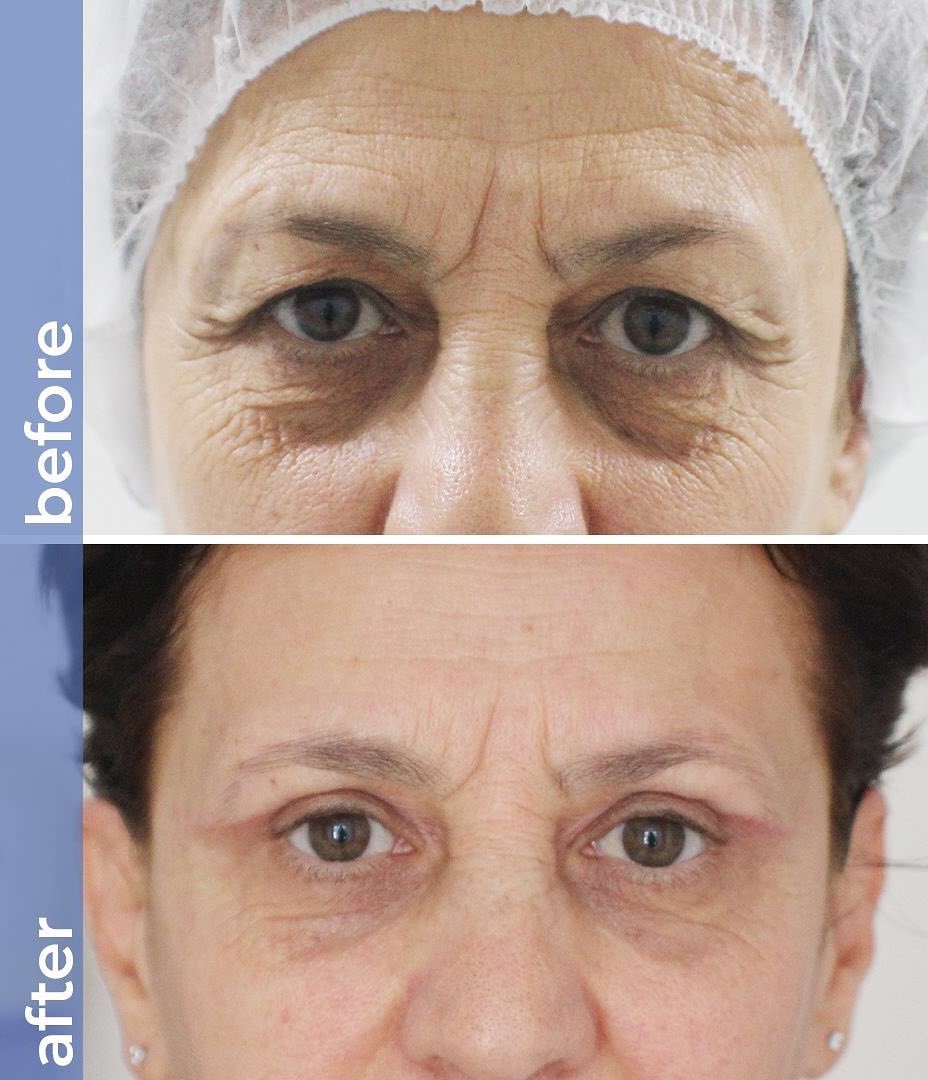
Eyelid surgery 3 months after surgery
Eyelid surgery 5 months after surgery
Eyelid surgery 15 months after surgery
What to do after blepharoplasty eyelid surgery?
- The eyelid and its surroundings swell and become bruised in the first two days. A cold compress is applied to the eyes on the first day to reduce this swelling and bruising.
- Swelling and bruises can be reduced by holding the head up.
- Antibiotics, oedema relievers, and pain relievers are given.
- Eye drops and ointment are given against dry eyes. These should be used for the first five days.
- Depending on the type of anaesthesia applied, one goes home after 1-4 hours.
- Resting at home for 3-5 days is sufficient. Continue to keep your head up throughout the next week.
- No significant pain is expected.
- Stitches are usually removed after one week.
- 3-7 days should be waited for returning to work.
- Heavy exercises and excessive fatigue should be avoided for three weeks.
- Swelling and bruises decrease after the 5th day and on the 14th-16th day. The bruises almost completely disappear within a single day.
- After the 10th day, the remaining bruises can be hidden with makeup.
- In the first 1-2 weeks, there may be temporary discomforts, such as excessive tears, blurred vision, and sensitivity to light.
- For several weeks, your eyes will be sensitive to irritants such as sunlight and wind. Sunglasses should be used outdoors.
- In the first week, activities such as reading books, using computers, and watching television that may cause dry eyes should be avoided.
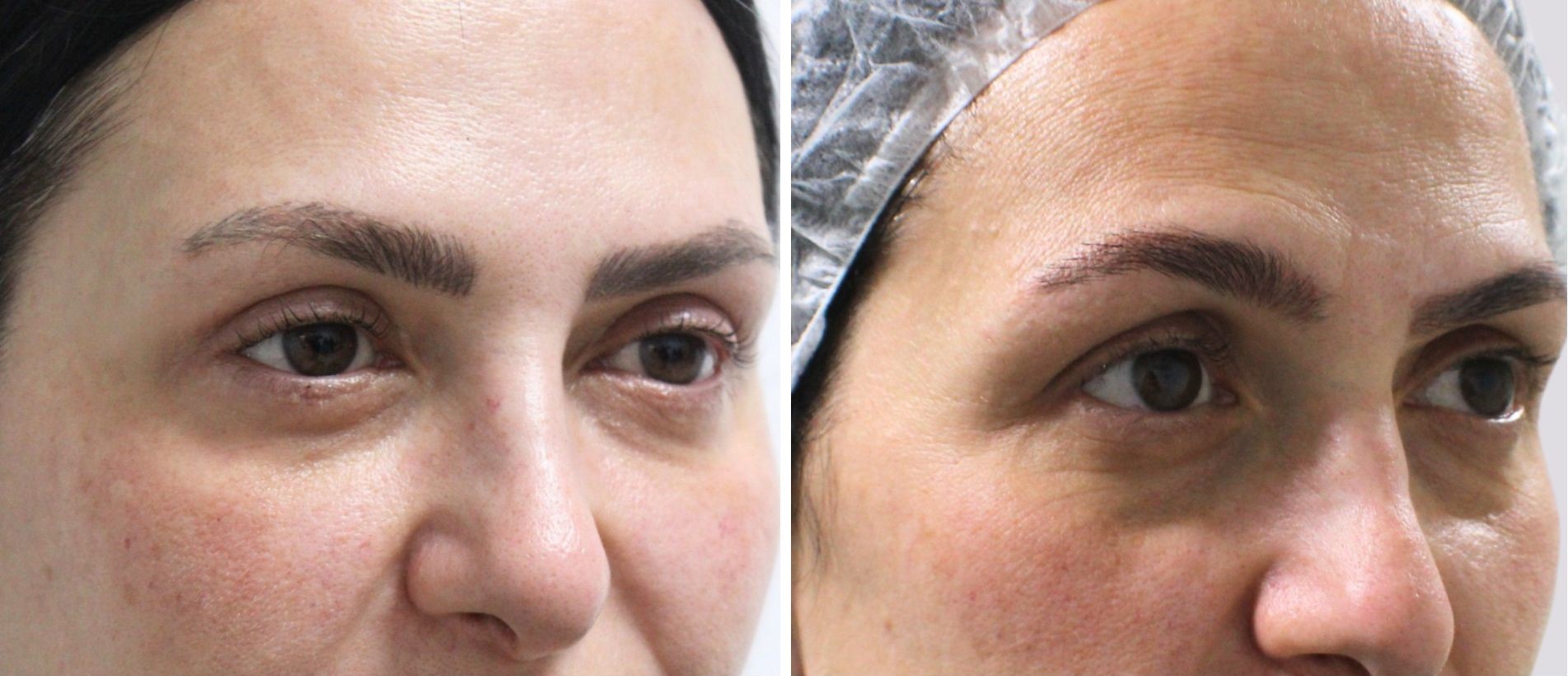
Eyelid Fat Injection in Turkey, Ankara
Signs of ageing, sagging, and hollow areas around your eyes can make you appear tired. With upper and lower eyelid surgery, you can address these issues, while fat injection restores volume around the eyes. This combined procedure gives you a youthful, refreshed, and vibrant appearance.
Lower Blepharoplasty Before and After
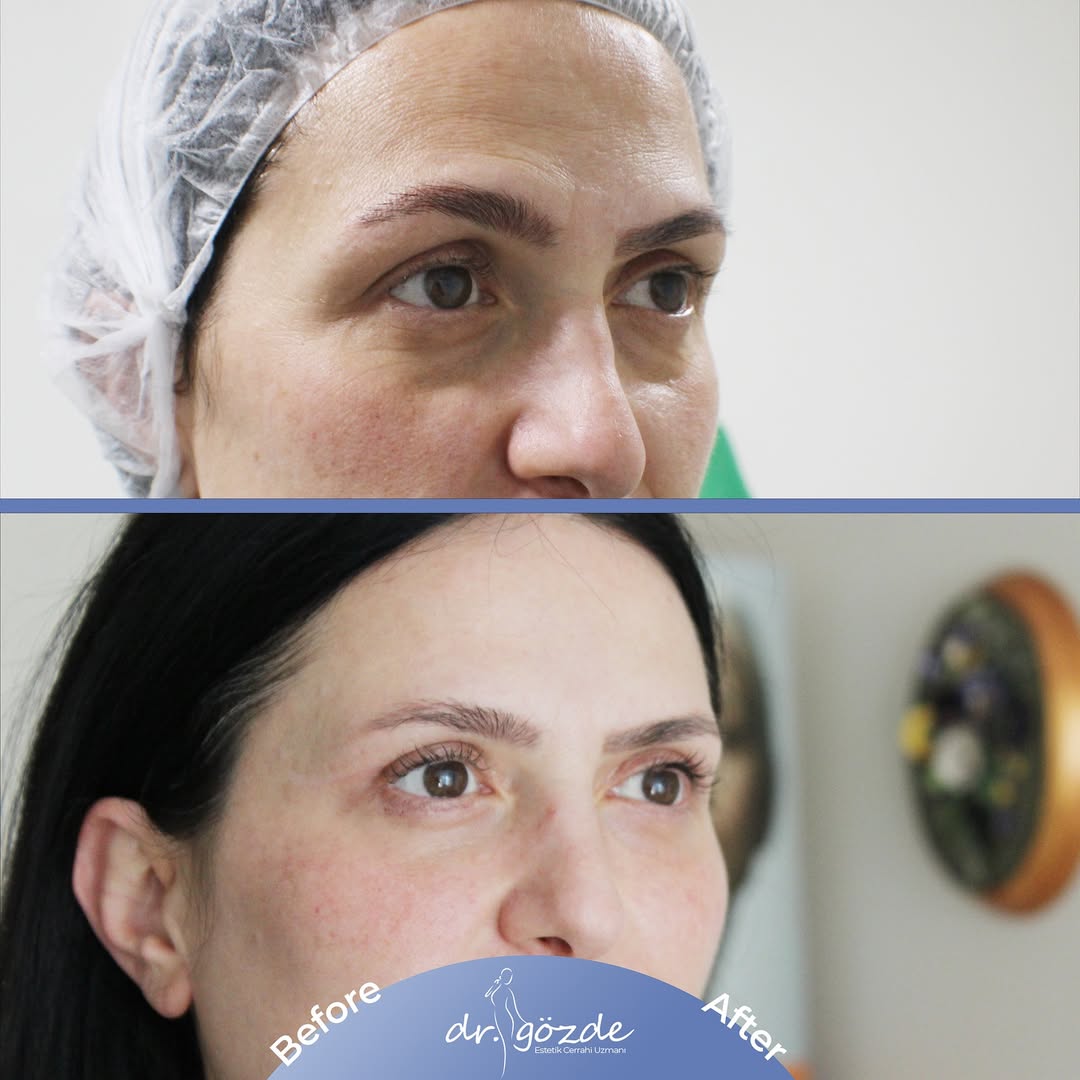
Male Blepharoplasty (Eyelid Surgery) Turkey
Eyelid surgery is an aesthetic procedure also preferred by men. It is applied to correct sagging eyelids and bagged lower eyelids. Male patients generally prefer rejuvenation while maintaining a more natural and masculine appearance.
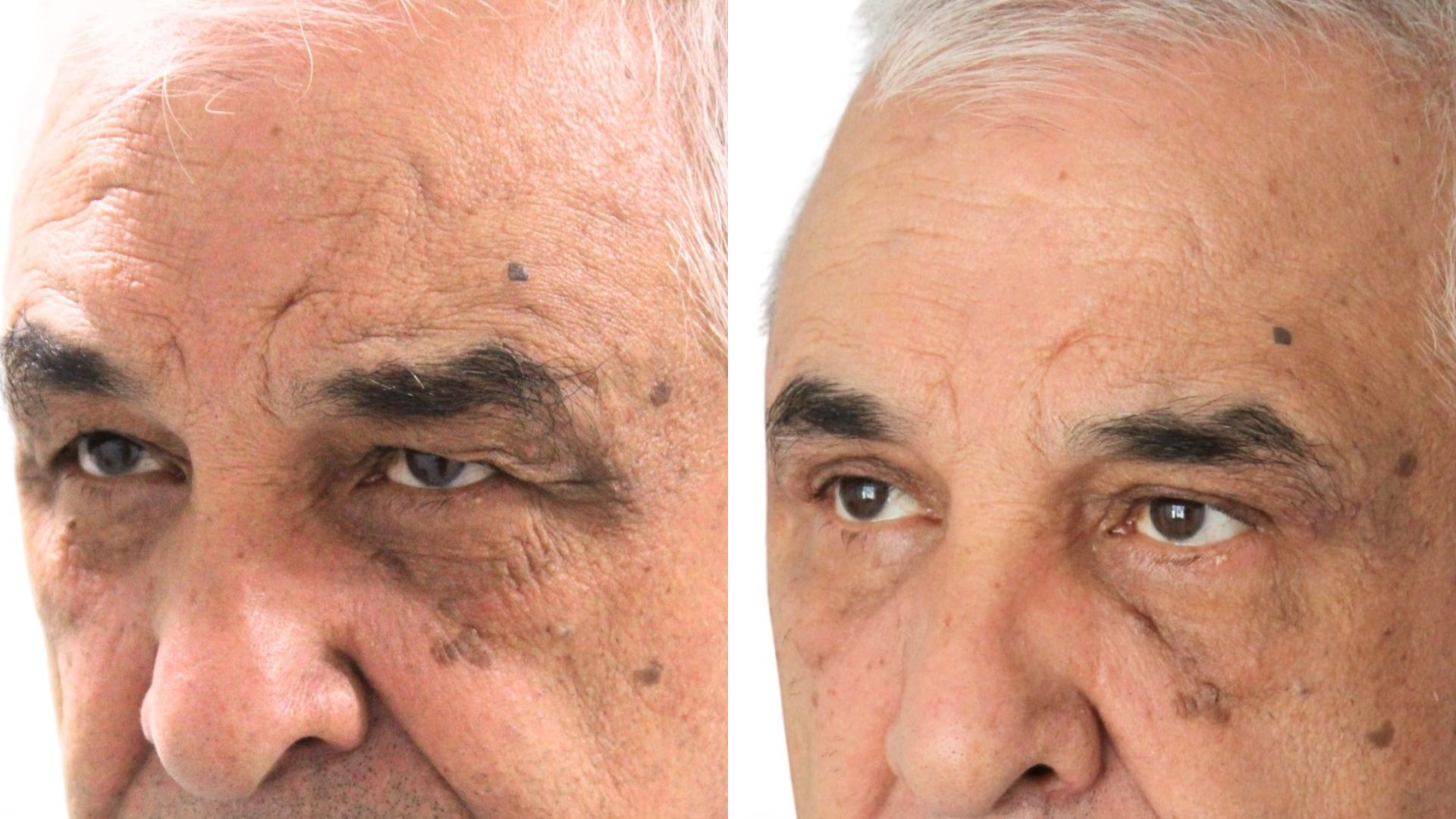
Is blepharoplasty possible without surgery?
What are the risks of blepharoplasty eyelid surgery?
Blepharoplasty eyelid surgery is generally safe, but like any surgical procedure, there are risks. Here are some possible, albeit low, risks:
Infection:
As with any surgical procedure, the risk of post-operative infection is valid for blepharoplasty eyelid surgery.
Bleeding:
Bleeding may occur during or after surgery.
Anaesthesia complications:
When general anaesthesia is used, anaesthesia-related complications may occur.
Temporary or permanent vision loss:
Although rare, temporary or permanent vision loss may occur after blepharoplasty eyelid surgery.
Weakness in eyelid muscles:
Problems such as weakness or paralysis may occur in the eyelid muscles after surgery.
Dry eye:
Changes in the eyelid after surgery can cause dry eyes.
Eyelid deformity:
Eyelid deformity may occur after surgery.
Stitch removal problems:
Problems that may occur during or after stitch removal are also among the risks.
In addition, there are the following risks:
Wound opening, extremely pronounced scarring, temporary problems with the closure of the eyelids, excessive lowering of the lower eyelid.
Please contact us for additional information or to schedule a consultation for eyelid surgery.
